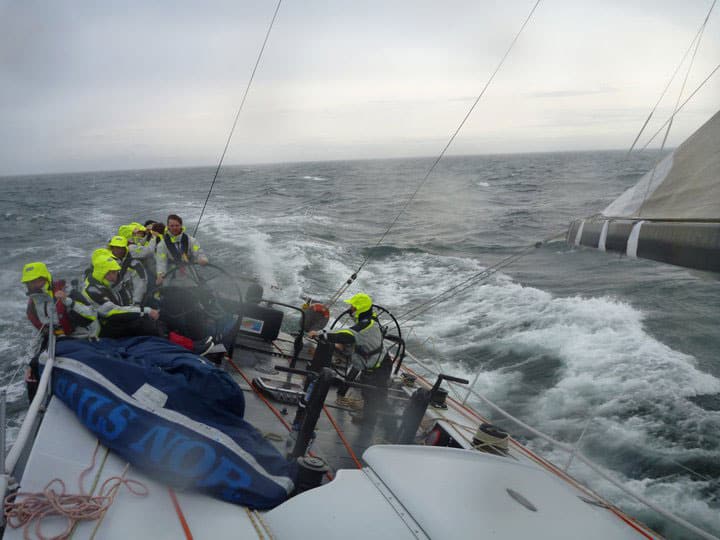
110622_OAAOT_Training
I have often listened to experienced ocean racers wax on and on about life at sea. I’ve endured their enthusiastic dispensing of advice, waiting and wanting to experience offshore racing for myself. I’ve desired the simplicity and direct purpose of that time away from land. I’ve wanted to see the unobstructed view of the stars at night. I’ve dreamt of leaving the cell phone on land, concentrating only on sailing, and having three square meals a day. (Of course, by square meal, I mean a macrobiotic slurry of freeze-dried intestinal distress.)
So for all of you who, as I once was, are waiting to have offshore experiences, you’re about to get an eyeful of wistful bantering!
The Oakcliff All-American Offshore Team departed Newport, R.I., on June 14. The sun was masked by low clouds, the wind, a crisp 12 to 18 knots from the northeast. We headed southeast with our eyes on the GRIB. The plan was to spend a day or two heading southeast, far offshore and free running. From there we would cross weather patterns by reaching west, then after a few hours of calm, lock into running conditions that would take us back to Newport.
Amazingly enough, that is precisely what happened. We enjoyed nights under the full moon, running at 15 to 20 knots, blasting through warm Gulfstream waters. The crew adapted immediately to the rhythm of the watches. By day two, I didn’t ever want to come back.
On the return trip, the weather deteriorated as we neared Montauk. The weather data showed frontal activity moving rapidly from east to west. During the night and early morning, rumblings of thunder warned of incoming weather. The day cleared to low clouds spotted with squall lines and flashes of lightning. Then the sail changes began. We started with the A2 spinnaker, then went to jib top/genoa staysail combination. After scudding along at 18 knots of boat speed at 128 degrees true in 28 knots of wind, we put in a reef in order to achieve our desired heading. It was a heinous and blustery day. The winds had peaked at 38 knots, the rain was thick and torrential. It was under these conditions that the Vanquish crew, warm in their Gill Ocean gear, cruised home to Newport under a double-reefed main and No. 4 jib.
We accomplished a lot on our last practice cruise before the 2011 Transatlantic Race. We put the boat through its paces, turned it into a submarine a couple of times—discovering new and interesting leaks—and gelled into a confident and prepared crew. This is exactly what the Oakcliff All American Offshore Team is trying to produce. The goal is to create a new generation of young ocean racers, ready to prove to the world that we can compete safely and successfully. If this team continues, there will be many more young American sailors that won’t have to listen to old salts drone on and wonder what it would be like to race offshore. They’ll know first-hand.









